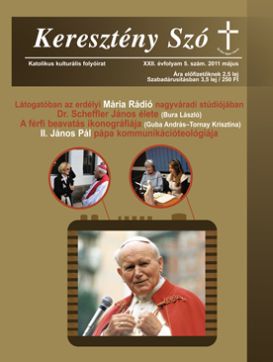Hogyan ábrázolható, ami nem látható? Felső-Rajna-vidéki női misztikusok devóciós képhasználata a 12-14. században
How to Represent the Invisible? Devotional Pictures of Women Mystics in the 12–14th Centuries
Author(s): Judit Lesti Subject(s): Christian Theology and Religion
Published by: VERBUM Keresztény Kulturális Egyesület
Keywords: mysticism; devotional adoration
Summary/Abstract: In the Middle Ages mysticism and devotional adoration of pictures were closely related. Devotional pictures had an important role in the spiritual routine. Hildegard von Bingen and the women mystics from Helfta mingled mystical experience with the theological truth of Catholic official teaching. This seems to be a paradox, yet many mystics were beatified: Theresa of Avila, John of the Cross, St. Francis of Assissi. It is not clear whether the visionary mystic was inspired by certain pictures or the artists took their themes from the description of the visions. Gertrud von Helfta (1256– 1301) described the Virgin Mary and this inspired some representations: Maria gravida (in the Dominican monastery on St. Katharina), Mulier amicta sole in one of the miniatures of the Rothschild Canticles. The women’s religious approach was mainly characterized and influenced by these visions that were rooted in biblical images but showed the somewhat independent spirituality of women.
Journal: Keresztény Szó
- Issue Year: XXII/2011
- Issue No: 05
- Page Range: 33-36
- Page Count: 4
- Language: Hungarian

